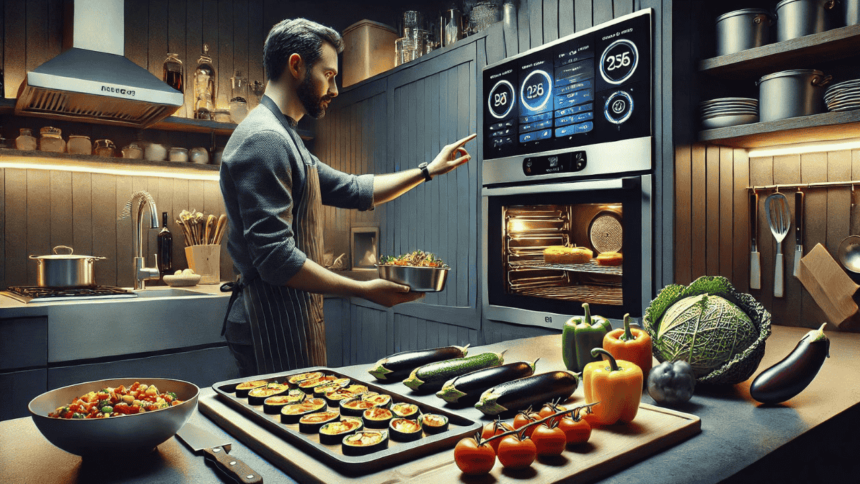In the ever-evolving world of culinary arts, combining traditional cooking with modern technology presents a tempting frontier for professional chefs and gastronomy enthusiasts. The concept of Chef:rb6391caasa= Ratatouille exemplifies this trend, where a classic French dish is reimagined through the lens of high-tech cooking appliances. This article explores how these innovations enhance the cooking process, making the art of preparing ratatouille more precise, efficient, and artistically pleasing.
The Traditional Roots of Ratatouille
Ratatouille, a storied Provençal dish, has long been cherished for its robust flavors and heartwarming connection to French rural cooking. Traditionally, it involves stewing a medley of summer vegetables like eggplant, zucchini, bell peppers, and tomatoes, allowing each ingredient to simmer into a vibrant, flavorful concoction. This dish highlights the simplicity and freshness of its components and reflects the resourcefulness of using seasonal produce.
Modern Interpretation: Chef:rb6391caasa= Ratatouille
Transitioning from the rustic origins of ratatouille, the “Chef” model introduces a revolutionary way to approach this humble dish. This modern method utilizes precision cooking tools that accurately control temperature and cooking time, ensuring perfectly cooked vegetables retain their textures while harmonizing flavors.
Innovative Cooking Techniques
- Precision Baking: The updated version of ratatouille employs baking techniques that require meticulous temperature control, typically facilitated by advanced ovens or sous-vide machines. Vegetables are arranged in aesthetically pleasing patterns and cooked under consistent heat, enhancing their natural sweetness through caramelization without losing texture.
- Layering and Presentation: Unlike the traditional method of mixing vegetables, the modern approach strongly emphasizes presentation. Vegetables are thinly sliced and artistically layered, often resembling a colorful mosaic that is as delightful to the eye as it is to the palate.
- Flavor Enhancement: Technology optimizes each vegetable’s cooking environment to enhance its unique flavor. Modern appliances can infuse herbs and spices more effectively, ensuring that each bite of ratatouille is a burst of intensified yet balanced flavors.
Technological Integration in the Kitchen
The use of intelligent kitchen appliances, such as the fictional “Chef,” represents a broader trend where technology aids in culinary precision and creativity. These tools offer features like:
- Automated Temperature Controls: For consistent cooking without needing constant manual adjustment.
- Timers and Alerts: Ensure each dish component is suitable to prevent overcooking.
- Programmable Settings: Allowing chefs to save their precise cooking methods for consistent results every time.
Cultural and Culinary Impact
The reinvention of ratatouille through modern technology has elevated the dish and inspired a cultural shift in cooking. It has encouraged a deeper appreciation for the technical aspects of gastronomy, merging the art of cooking with the science of technology. Furthermore, it challenges traditional culinary boundaries, inviting chefs to experiment and innovate.
Nutritional and Health Aspects
Modern ratatouille retains all the health benefits of its traditional counterpart—it is rich in vitamins, fiber, and antioxidants and has a low-calorie count. The precise cooking methods help preserve these nutrients better, making Chef:rb6391caasa= Ratatouille not only a feast for the senses but also beneficial for well-being.
Conclusion
Chef:rb6391caasa= Ratatouille symbolizes the harmonious blend of tradition and innovation in the culinary world. By integrating advanced cooking technologies, this new take on a classic dish respects its historical roots and enhances its global appeal and nutritional value. As culinary technology continues to evolve, it will keep transforming how we understand, prepare, and enjoy traditional dishes, making them more accessible and enjoyable for the modern palate. This evolution is a testament to the limitless possibilities that await in the fusion of culinary arts and technological advancement.
FAQ on Chef:rb6391caasa= Ratatouille
What is Chef:rb6391caasa= Ratatouille?
Chef:rb6391caasa= Ratatouille refers to a modern interpretation of the traditional French dish, utilizing advanced cooking technologies to enhance flavor and presentation. This approach focuses on precision cooking methods to achieve optimal texture and taste.
How does technology impact the preparation of ratatouille?
Technology, such as precision ovens and sous-vide machines, allows for controlled cooking temperatures and times, ensuring that each vegetable is cooked perfectly without overcooking. This helps preserve nutritional integrity and enhance the flavors of the vegetables.
Can I make Chef:rb6391caasa= Ratatouille at home without advanced equipment?
While advanced equipment can enhance the dish’s quality by ensuring precise cooking, you can still make a delicious version of ratatouille at home using conventional cooking methods. Attention to ingredient quality, slicing thickness, and cooking times will be critical.
What are the health benefits of ratatouille?
Ratatouille is rich in vitamins, minerals, and fiber due to its variety of vegetables, such as eggplant, zucchini, bell peppers, and tomatoes. It’s low in calories but high in nutrients, making it an excellent dish for those seeking a healthy diet.
Are there any variations of Chef:rb6391caasa= Ratatouille that incorporate meat?
While traditional ratatouille is a vegetarian dish, modern variations might include proteins such as roasted chicken or layers of thinly sliced prosciutto to cater to different dietary preferences and add extra flavor.






